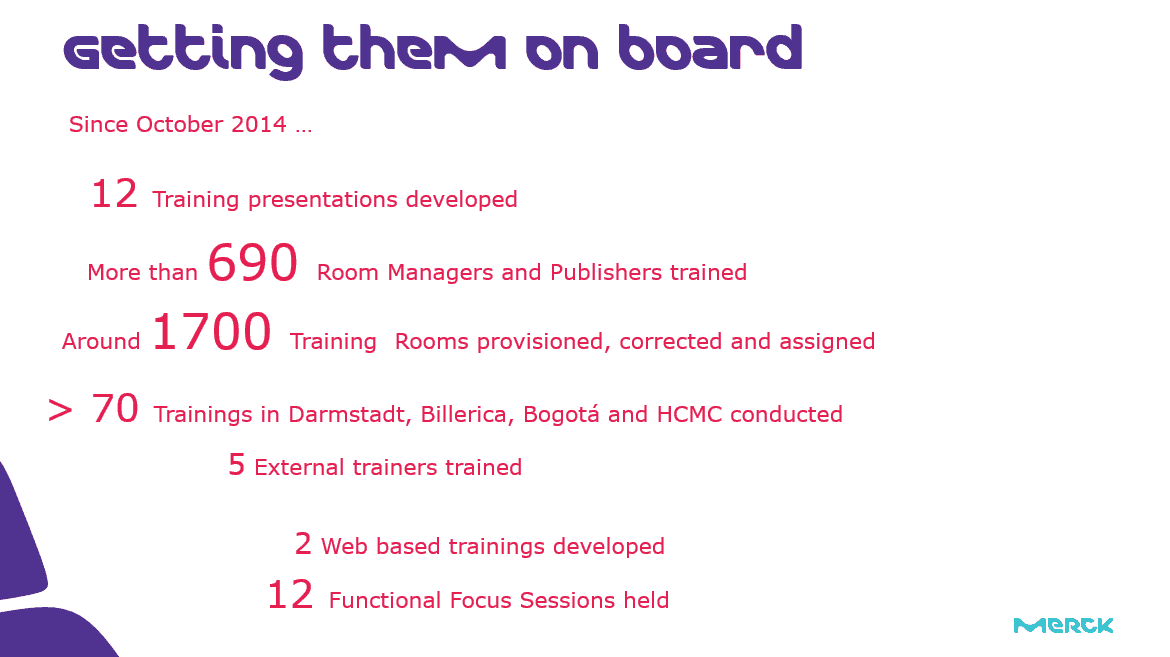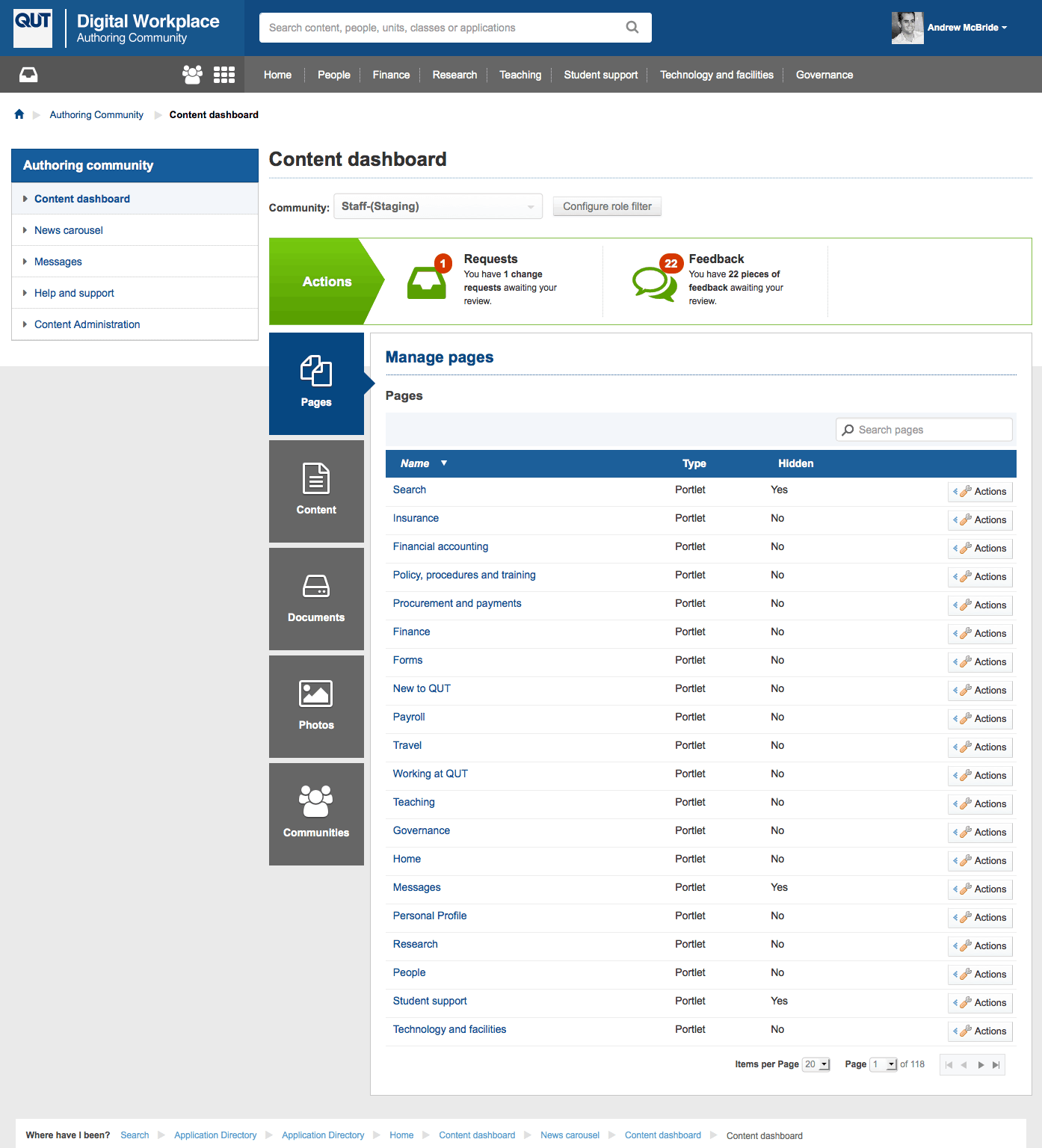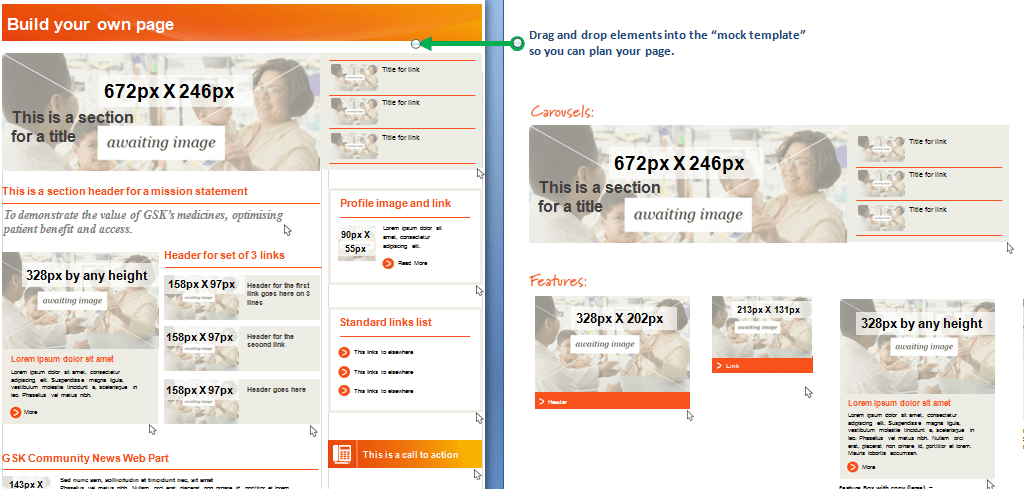
Filed under: Digital workplace, Intranets
The Intranet Operating Model highlights the critical elements of governance that make an intranet valuable, successful and sustainable. It covers six categories, three for guiding the management and governance of the intranet and three for the doing aspects of delivering and sustaining a great intranet:
Guiding
- Accountability
- Standards
- Guiding principles
Doing
- Delivery
- Management
- Support
The importance of support
Effective support is the foundation for managing an intranet. Most modern intranets, as well as collaboration platforms, operate in a decentralised manner. A small centralised intranet team must take on a strategic and coordinating role across a much wider network of site managers, content owners, authors and publishers, super-users, community managers, champions, internal communicators and technical roles.
Many of those in this wider cast of players are involved on a voluntary basis or only as a small part of their role. They need support from a central team to deliver the best use of the platform. In turn, the central intranet team needs these local players to enable high levels of adoption and good quality of content across the platform.
Because of this, the way central teams support these networks is critical. There are four key ways to do this:
- Providing training and support, to upskill those involved and help them be self-sufficient as far as possible
- Driving community and engagement so that the network continues to contribute and remain active
- Delivering tools to make “local roles” and associated tasks easier and more sustainable
- Partnering with local site managers and other players in a more formal way to enable more complex processes
Let’s explore each of these options in more detail, sharing great examples from leading intranet teams.
1. Providing training and support: Merck and Philips
Intranet teams commonly provide training and support to site managers, publishers, and other related participants. This includes face-to-face training, online sessions, recorded sessions and training videos.
Training and support works best when it:
- is targeted to the needs of particular groups
- reinforces a “self-service” approach
- is available online to maximise coverage across the organisation
When German pharmaceutical company Merck launched an ambitious new intranet and digital workplace (“EVA”) which involved its bold new corporate branding, it focused its efforts and resources on change management to drive adoption and value. This involved extensive targeted training, particularly to different roles associated with each “room” – the term Merck used to describe different sites and workspaces on the new platform.

The intranet team at Merck have carried out extensive training for “room” (site) managers and publishers. Screenshot appears courtesy of Merck.
External training professionals were employed to help deliver classroom-based and remote training. Ambitious two-to-three day training sessions were held around the world in Boston, Darmstadt and Bangkok. Self-service resources were also available via EVA itself including recordings of online training on topics such as “Ensuring a good user-experience in EVA”.
Overall the training has been invaluable in driving a well-adopted solution across the whole of Merck.

The Merck intranet has content about the intranet, including recorded webinars to support ‘room’ owners and other intranet-related roles. Screenshot appears courtesy of Merck.
At global healthcare and technology company Philips, a new intranet built around search meant it was important that authors and content providers tagged content with the right topic labels to ensure findability. To get used to this new practice, appropriate support and training was provided.
An innovative approach for training content owners consisted of an online game encouraging accurate tagging. This personalised online game gives content owners the opportunity to tag stories with various different keywords, some of which are correct. Based on the time they take and choices they make, players get a score. A leaderboard encouraged healthy competition!
Philips introduced other training, including an online course. Content editors and topic owners only receive access to the intranet content management system once they have successfully completed this. A printed certificate for those who complete the training helps drive engagement.

Philips’s topic and tagging game helped train authors to tag their content, an important activity to support findability on the new intranet. Screenshot appears courtesy of Philips.
2. Driving community and engagement: PwC Global
Beyond providing training to the decentralised networks of authors, site managers and community managers, it’s important to keep them engaged. This is key to unlocking their continuing cooperation and enthusiasm for what is often extra-curricular activity.
Global consulting firm PwC Global was successful in engaging a network of voluntary advocates to be local champions and trainers for the roll-out of the company’s global social network Spark. The advocate network became integral to supporting and sustaining the platform.
PwC introduced various measures to help build a sense of community and drive recognition, including:
- hiring a dedicated community manager
- monthly and annual awards for the best advocate
- monthly calls across the community where achievements were highlighted
- opportunities for advocates across the globe to network with each other online and at events
- physical and digital badges so advocates can be proud to show off their status
- words of encouragement from management and individual achievements recognised in communications
- adaptable resources such as a general slidedeck which can be easily adapted for different scenarios
PwC’s approach focused on advocates, but could work equally well with publishers, super-users, community managers and other similar groups.
3. Delivering tools to help publishers: QUT and GSK
Providing tools and dashboards for publishers can help them to succeed in daily activities. These tools might:
- display site analytics in a digestible format
- provide templates for easier publishing
- give content owners an effective overview of the status of content
- present actions which need to be completed
- help individuals plan, structure and improve sites
At the Queensland University of Technology (QUT) a brand new intranet and digital workplace environment introduced improvements to content, including role-based content and personalisation. Some targeted content that had been in its own page was dispersed within the wider structure of pages.
The new environment delivered value for users but involved some challenges for the community of over 400 publishers, particularly in managing content that appeared as assets or components within a page.
To help publishers and content editors, the intranet team built a custom content dashboard where they can:
- view all pages belonging to them
- manage content and metadata
- view all the content assets they are responsible for and which pages these appear in
- manage rich media and documents
- see all tasks they need to complete and requests they need to action
- view user feedback
There is also a authoring community site with additional helpful resources and the ability to join discussions and ask questions. Overall the dashboard has been extremely valuable in sustaining a distributed publishing model with nearly 450 publishers.

QUT’s intranet content dashboard to support content owners, publishers and authors. Screenshot appears courtesy of QUT.
Meanwhile global pharmaceutical and healthcare company GSK had a global intranet platform based on SharePoint which had had very little governance. The result was hundreds of microsites with different layouts, most of which were not brand-compliant. Overall the user experience was confusing and it was very difficult for the intranet team to make any central changes.
In order to rectify this situation, the intranet team introduced a new brand-compliant microsite template. Uniquely, they opted for a self-service approach so site owners could implement the template themselves, with the central team running an extensive change management program with ongoing training and resources provided.
One tool which the team provided to site owners was an easy-to-use “blueprint” tool which allowed them to plan and design their new site based on the new microsite template. This relatively simple tool, based on PowerPoint, allowed site owners to drag different site elements into a mock site to see how it would look.
This not only gave them information on how to use the new template and made it both accessible and tangible, but also engaged them by showing them how their new site could be improved. Ultimately this made the whole process easier for site owners and enabled the central team to make hundreds of microsites brand-compliant in an easy and pragmatic way.

GSK produced a simple PowerPoint-based blueprint tool to allow site owners to plan the redesign of their sites in a new brand-compliant site template. Screenshot appears courtesy of GSK.
4. Partnering with site owners: Arla Foods
Partnering with a local site manager or similar is usually a formal process or agreement which clarifies how a central intranet team supports a local team or individual in developing and maintaining a part of the intranet.
Having this clarity usually benefits both parties. Local teams know what to expect and how to get support, but central teams can drive best practices and standard formats.
Global dairy producer Arla Foods created a new task-based intranet with bold, colourful branding. One of the successful ingredients of the new intranet are the various Service Portals which have been launched.
These provide access to tools and information from a function or on a topic in a standardised, user-centric format. Portals launched include Finance, Supply chain excellence and Procurement. They continue to launch on a monthly basis.
The central intranet team developed a standard partners process for building a service portal. The process is divided into a number of clear steps, each with meetings and specific tasks and outcomes. The processes take the owner of the service portal through different phases such as governance and planning, design, building the actual site, training and launch. There is also an ongoing annual review to make any necessary improvements.
Having this partnering process helps the central intranet team to establish a uniform format and maintain a strong user experience for each service portal.

Arla Foods has developed a detailed process for creating themed service portals where content owners partner with the central intranet team. Screenshot appears courtesy of Arla Foods.
Focus on support
Support is critical and should be an integral part of the way you manage your intranet, particularly where you are operating a decentralised model and you are relying on a network of individuals. While different methods will work better across different organisations, use some of the examples above to figure out what will work well for you.
Whatever you do, give your support to support!





